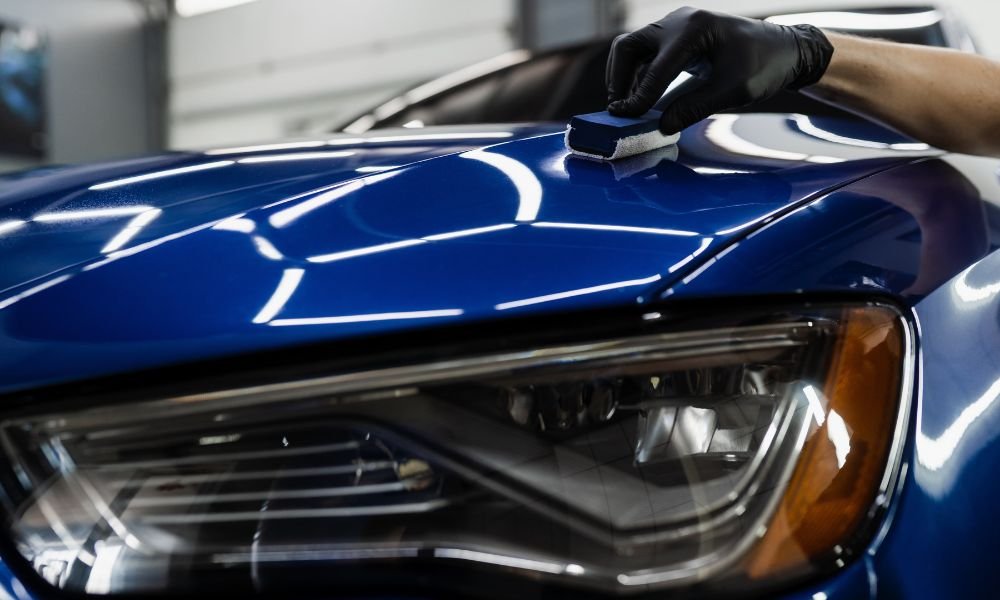Leading Ceramic Coatings San Jose Solutions for Automotive Quality
Leading Ceramic Coatings San Jose Solutions for Automotive Quality
Blog Article
Introducing the Scientific Research Behind Ceramic Coatings: Exactly How Does It Job and Why Is It Above Standard Options?
Ceramic layers have actually been acquiring appeal in numerous sectors for their extraordinary performance and durability. Understanding exactly how ceramic layers job and why they surpass standard choices is crucial for those seeking to improve the long life and strength of their products.
The Chemistry of Ceramic Coatings
In understanding ceramic coverings, diving right into the detailed chemistry behind their structure is important for realizing their functionality and toughness. Ceramic layers are largely composed of silicon dioxide (SiO2), which develops a strong and protective layer when used to different surfaces. This chemical structure offers extraordinary resistance to warmth, chemicals, and deterioration, making ceramic finishings highly searched for for a wide variety of applications.
The chemistry behind ceramic finishings involves the development of covalent bonds between silicon and oxygen atoms, producing a stiff network that enhances the coating's toughness and longevity. Furthermore, the visibility of other components such as zirconium, light weight aluminum, and titanium additional enhances the covering's buildings, supplying increased solidity and bond to surface areas.
Recognizing the chemical structure of ceramic coverings enables for the personalization of formulas to fit certain needs, whether it be for automotive, industrial, or domestic functions. By harnessing the power of chemistry, ceramic layers proceed to lead the way for remarkable security and efficiency in different markets.
Advantages of Ceramic Coatings

As a result, ceramic layers make cleaning and preserving surfaces much less complicated and much less lengthy. On the whole, the wide variety of benefits used by ceramic coatings make them a remarkable alternative contrasted to typical finishing methods.
How Ceramic Coatings Bond
Ceramic layers bond to surfaces via a procedure that involves molecular attachment and chemical interactions. When a ceramic layer is used to a surface, it forms a strong bond by chemically sticking to the surface area at a molecular degree.
Moreover, the chemical interactions between the ceramic finish and the surface area even more boost the bond. ceramic coatings san jose. These communications allow the ceramic finishing to create a constant and smooth layer on the surface area, supplying exceptional defense and durability. Unlike typical finishes that might rest on the surface without completely bonding, ceramic coatings produce an irreversible bond that is resistant to chemicals, UV rays, and harsh environmental problems

Essentially, the bonding device of ceramic layers guarantees a long-lasting and efficient protective layer that exceeds traditional finishing choices. This remarkable bond adds to the durability, scratch resistance, and long life of ceramic coatings, making them a preferred option additional hints for different applications.
Longevity of Ceramic Coatings
The remarkable long life of ceramic finishings comes from their robust molecular adhesion and chemical interactions with surfaces, making sure a durable safety layer that goes beyond traditional finishing choices. As soon as applied, ceramic finishings create a strong bond with the substrate, creating a resilient obstacle versus numerous environmental stress factors such as UV radiation, chemicals, and abrasions. This bond is so safe and secure that it can withstand useful reference the rigors of everyday usage without wearing away or breaking down swiftly.
Unlike typical coatings that may degrade over time, ceramic finishings preserve their stability for an extensive duration, supplying resilient defense for the underlying surface area. The solid molecular structure of ceramic finishings withstands damaging, fading, and peeling, ensuring that the surface area stays shielded and aesthetically pleasing for years to come. This durability not just reduces the requirement for regular reapplications yet additionally saves money and time in the long run. On the whole, the outstanding durability of ceramic coverings makes them a remarkable selection for shielding a variety of surfaces in various applications.
Ceramic Coatings Vs. Typical Options
In comparison to standard coating methods, ceramic coverings provide a distinct mix of sturdiness and protective capacities that set them apart in various surface area defense applications. Standard alternatives such as wax or sealers supply a short-term layer of protection that can subside promptly, calling for regular reapplication. On the various other hand, ceramic coverings develop a strong bond with the surface, developing a irreversible or semi-permanent obstacle that is highly immune to abrasion, chemicals, UV rays, and extreme temperatures.
Furthermore, ceramic coatings use exceptional hydrophobic buildings compared to conventional finishes. Going Here The hydrophobic nature of ceramic finishes triggers water to bead up and roll off the surface area, bring dust and pollutants with it. This self-cleaning result assists to preserve the surface area's tidiness and gloss for extensive periods, reducing the requirement for constant maintenance.
Additionally, ceramic finishes have a thicker layer compared to traditional options, providing improved scrape resistance and defense against minor effects. This toughness guarantees lasting performance and aids protect the visual appeal of the treated surface area for an extensive period.
Final Thought
In conclusion, the science behind ceramic coatings depends on their chemical structure and bonding residential properties, making them above conventional choices. The advantages of ceramic layers include boosted resilience and protection for surface areas. By recognizing just how ceramic coverings work and their advantages over standard choices, one can make informed decisions when thinking about coating options for different applications.
Unlike typical finishings that might rest on the surface without totally bonding, ceramic coatings produce a permanent bond that is immune to chemicals, UV rays, and severe ecological problems.
The outstanding long life of ceramic layers stems from their robust molecular adhesion and chemical communications with surface areas, making certain a sturdy protective layer that surpasses standard covering options.Unlike typical layers that might break down over time, ceramic finishes preserve their stability for an extended duration, giving long-lasting protection for the underlying surface.In contrast to conventional finishing approaches, ceramic coatings provide a distinct blend of durability and safety abilities that establish them apart in various surface area defense applications. By comprehending exactly how ceramic layers work and their advantages over typical options, one can make educated choices when considering finishing alternatives for numerous applications.
Report this page